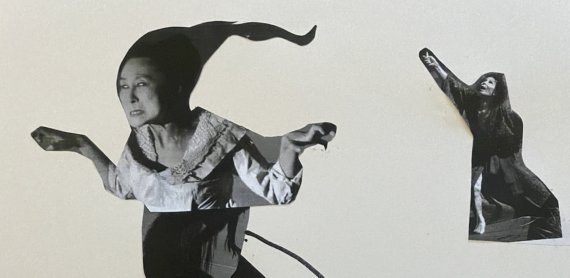
The Yung Ga Ma, a Hakka Chinese Myth
Yung Ga Ma is a project together with graphic designer and illustrator Chaimaa Lahnin. The Yung Ga Ma is a Hakka Chinese myth, a folk horror tale that is told to children, much like a Grimm’s brothers tale. There is a similar story in Morocco, with seven sisters instead of two. I found many examples of the Moroccan story online but almost no mention at all of the Hakka Chinese Myth and so this project was born.
The Yung Ga Ma myth has been passed down for generations orally and I have not found a book with the same story I know. It’s a mixture of Hansel and Gretel and Little Red Riding hood, with more eating and horror! My niece loves to hear the story from my mother. In fact, when my mum tries to tell her the story of Cinderella she says “Poh poh, no more talking! Tell me Yung Ga Ma!”
I have asked so many people, what does the Yung Ga Ma look like? Some say she is like a cross between a sloth and an old woman, others say she is a witch who can disguise herself as a human. Everyone says that she has long nails, long hair and sharp teeth…
For those of you who haven’t heard of the Hakka people, they are a Chinese minority dialect who are thought to have originated from the central plains. Someone told me the Hakka people are known as “The Jews of China”, because unlike other Han Chinese subgroups, the Hakkas are not named after a geographical region or a province, county or city. I feel that this phrase though, erases actual Jewish communities of China, who are predominantly composed of descendants of Sephardic Jews who immigrated to China in the 8th century.
The Hakka Chinese were originally northern Chinese refugees fleeing social unrest, upheaval and invasions throughout the northern parts of China (such as Gansu and Henan) at various stages in history. They initially sanctuary in the south where the Cantonese-speaking provinces such as Guangdong and Guangxi are.
The Chinese characters for Hakka (客家) literally mean “guest families” and you can find Hakka people all over the world, and practising all religions. The word is Cantonese in origin and as the name implies, they were originally the guests of the Cantonese people. Modern day Hakka are generally identified by both full Hakka and by different degrees of Hakka ancestry and usually speak Hakka Chinese as well as several other dialects or languages. My mum for example can speak at least four distinct dialects of Chinese as well as English. The Hakka diaspora is global, crossing all religions and with distinct Hakka dialects depending on locality.
My niece, who we call Pip. is only 3 years old, loves the story of the Yung Ga Ma! When her Grandma tells her the scary story of the Yung Ga Ma she listens intently. I think she is far too young to hear about such a horrible story, but when her Grandma tries to tell her another story, like Cinderella, little she says: “Poh Poh, No more talking! Yung Ga Ma!”
Pip’s grandma, or Poh Poh as she calls her, knows the story because her Grandma told it to her when she was little.
Would you like to hear the story of the YUNG GA MA?
